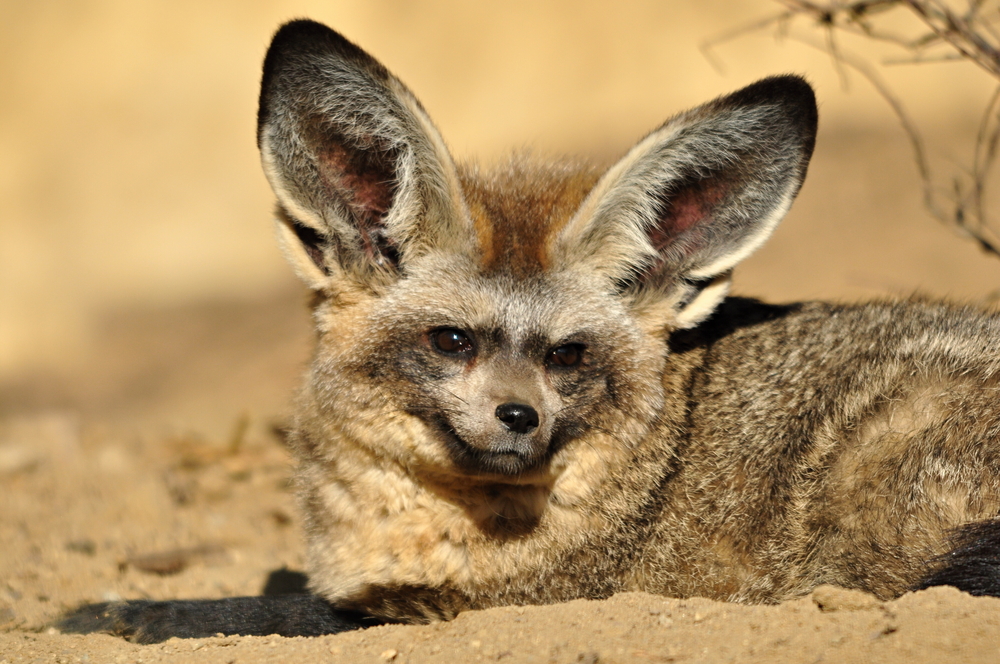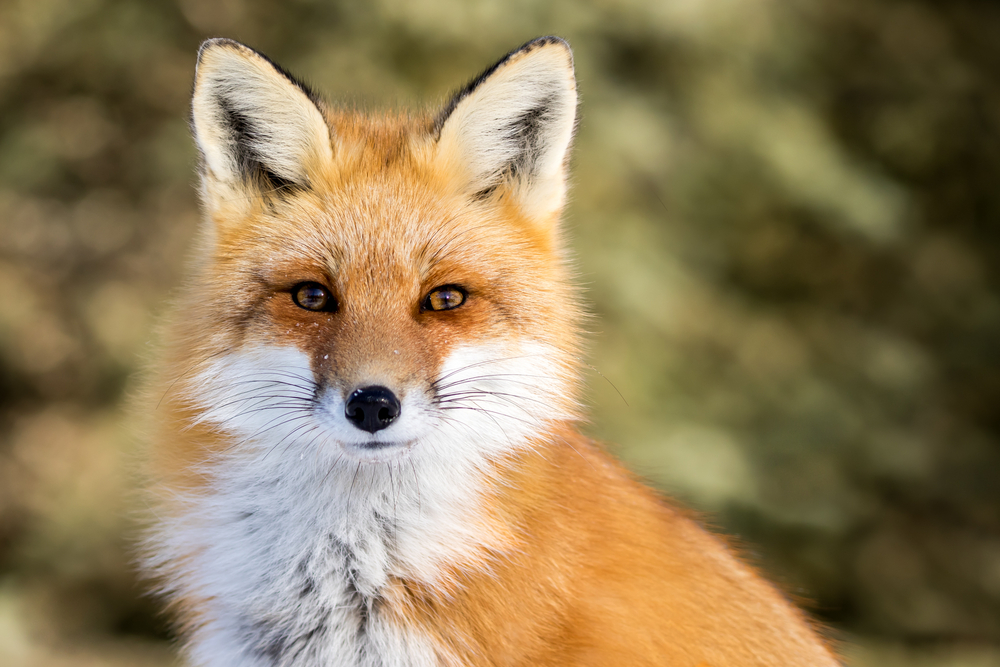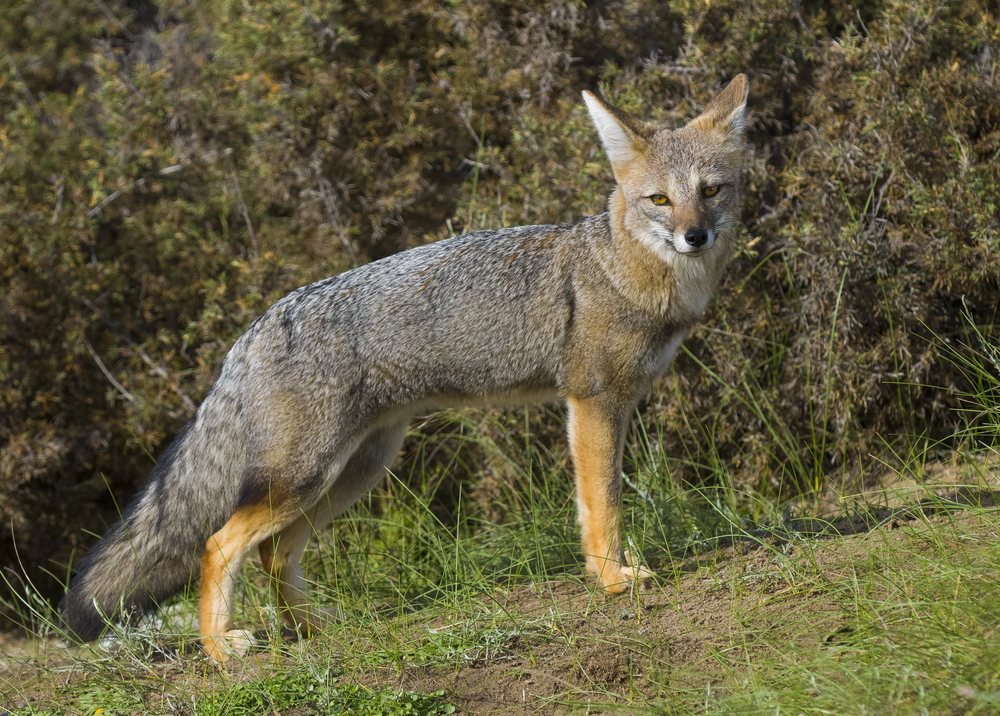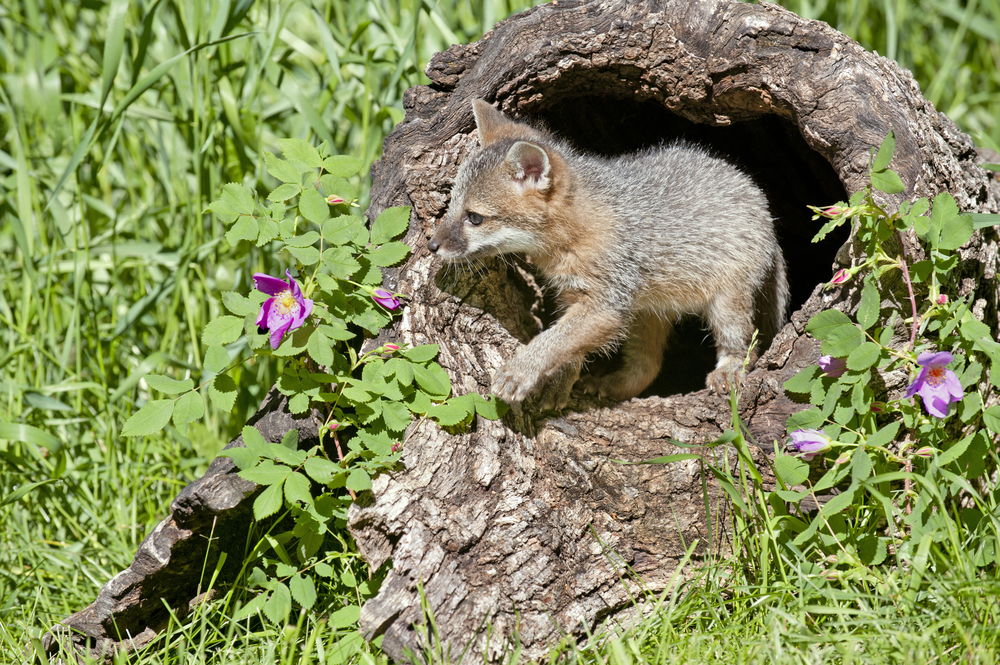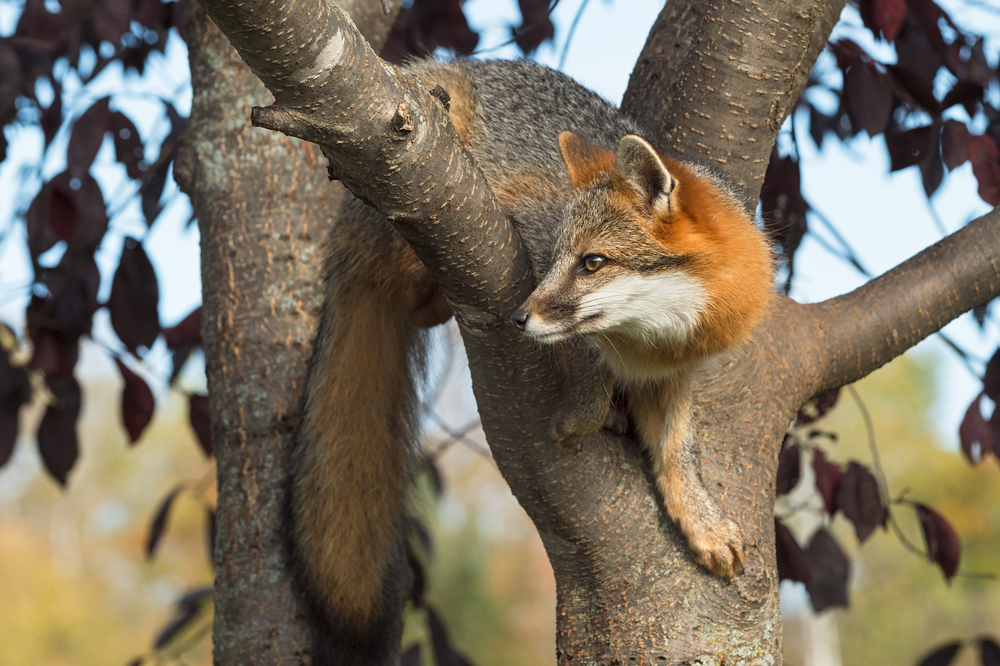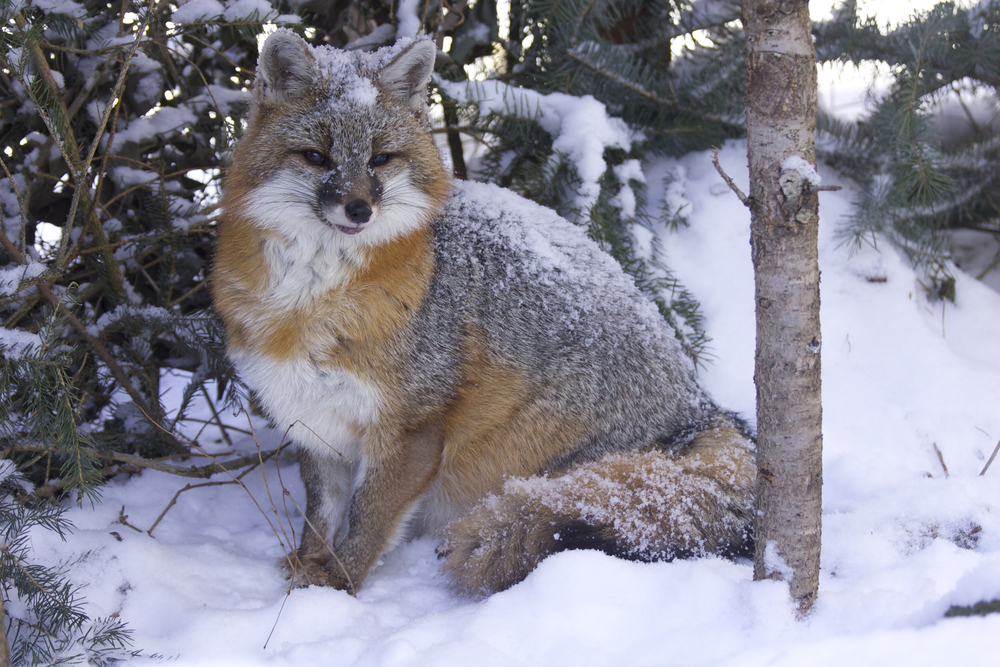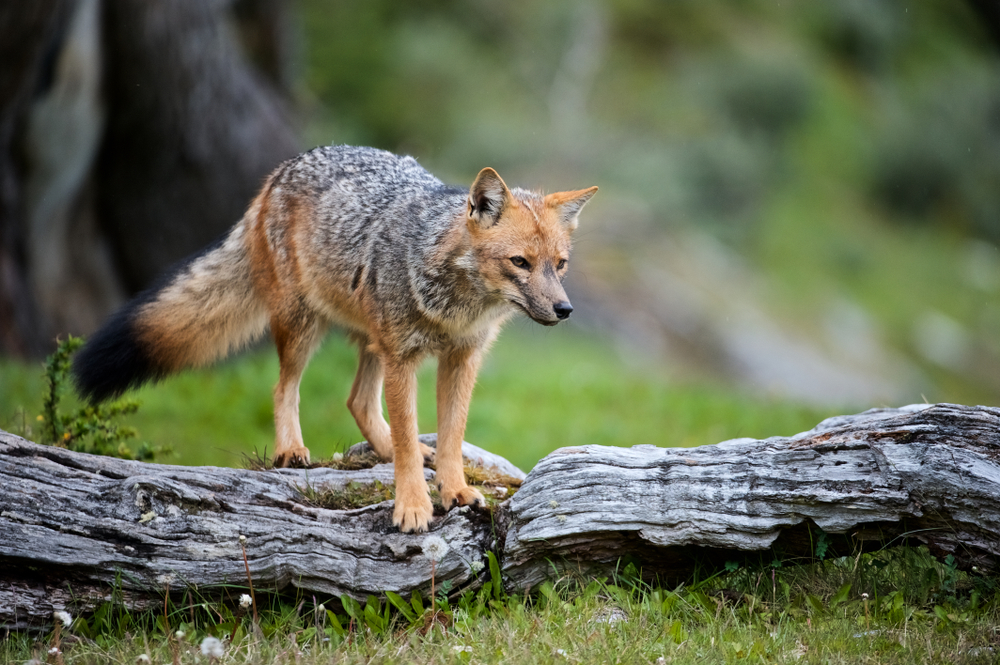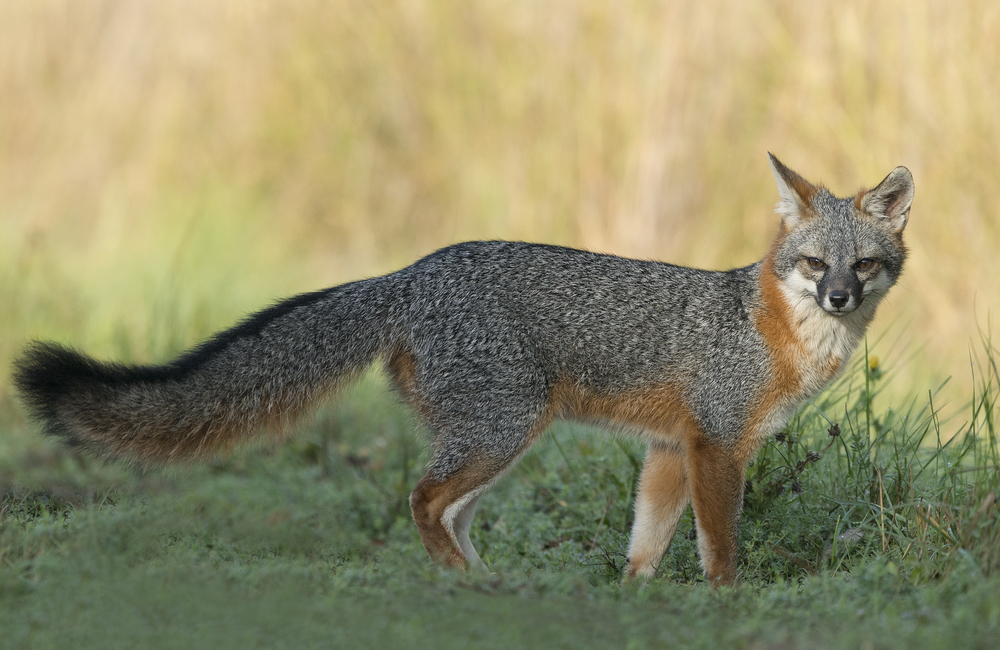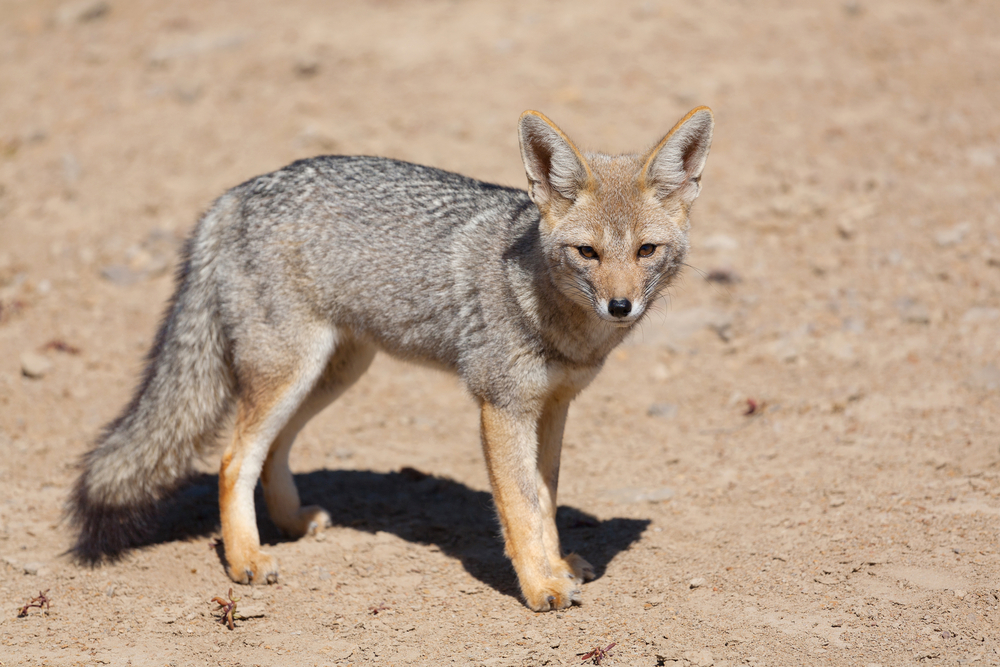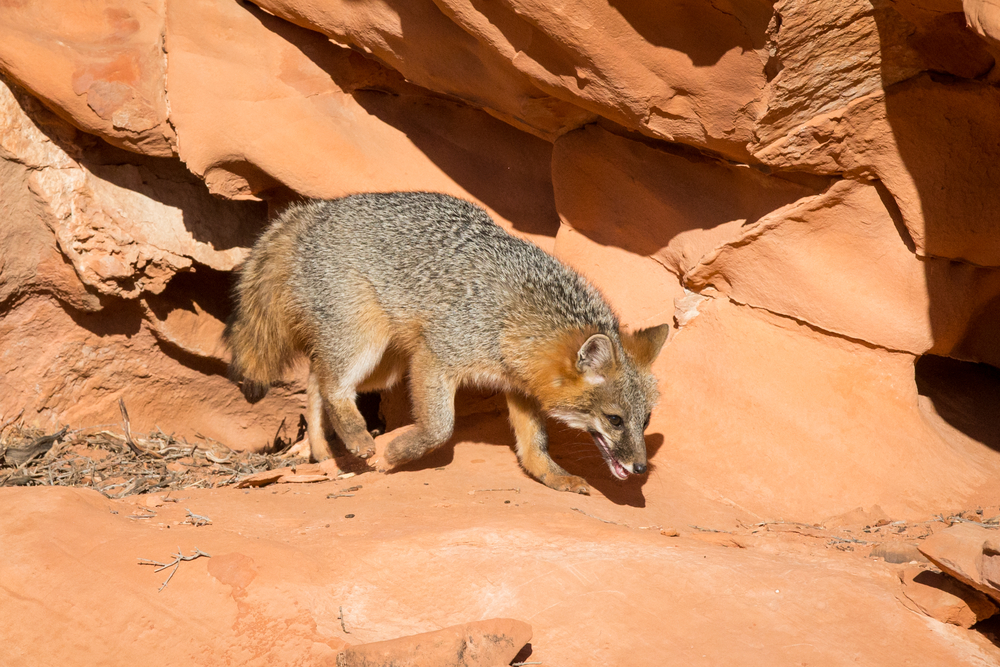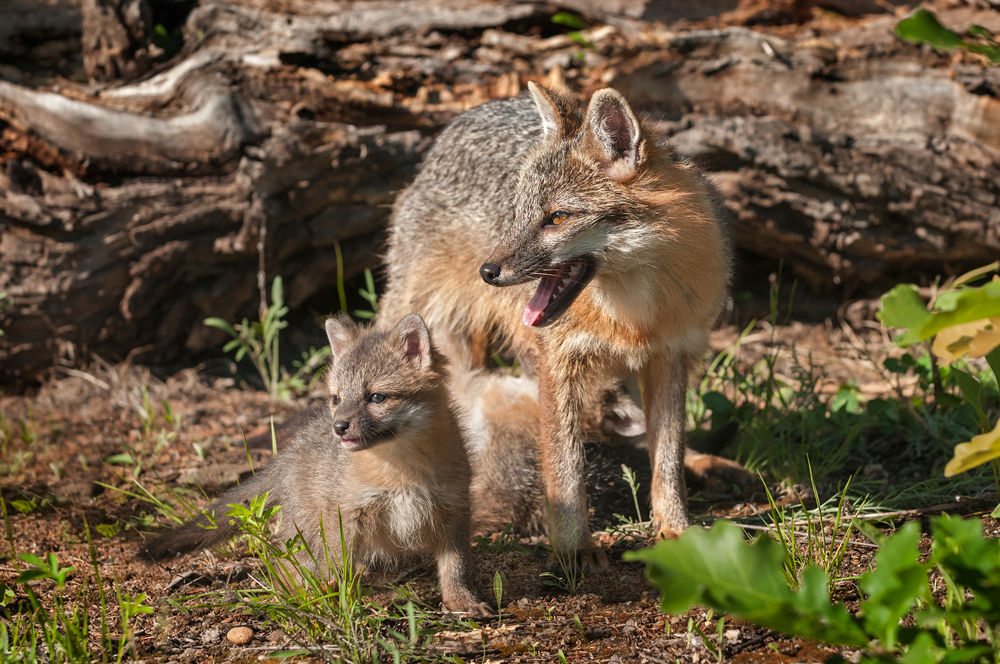About
The Gray Fox, scientifically known as Urocyon cinereoargenteus, is a fascinating mammal found in the Animal Kingdom’s phylum Chordata and class Mammalia. It belongs to the Canidae family, which includes other canines such as wolves, coyotes, and domestic dogs. Native to North and Central America, the Gray Fox is known for its distinctive appearance and adaptable nature.
This fox species has a unique coat coloration, with a mix of gray, black, and reddish fur, along with a distinct black stripe running along its back and tail. Unlike most other canids, the Gray Fox has the ability to climb trees using its strong claws, making it one of the few arboreal members of its family. This adaptation allows it to escape predators, access food sources such as bird nests and fruits, and find refuge in dense vegetation.
Gray Foxes are omnivorous, feeding on a varied diet that includes small mammals, birds, insects, fruits, and vegetation. They are primarily crepuscular and nocturnal, meaning they are most active during dawn and dusk, as well as nighttime hours. These foxes are solitary animals, except during the breeding season when pairs may form temporary bonds.
Conservation Concerns
The conservation status of the Gray Fox is generally stable, and it is not currently assessed separately on the International Union for Conservation of Nature (IUCN) Red List. However, like many wild carnivores, Gray Foxes face threats from habitat loss, fragmentation, urbanization, road mortality, and disease transmission from domestic dogs.
Conservation efforts focused on protecting natural habitats, reducing human-wildlife conflict, and mitigating road mortality can help ensure the continued survival of Gray Fox populations. Monitoring population trends and conducting research on their ecology and behavior are also essential for implementing effective conservation strategies. While not currently facing significant conservation concerns, ongoing vigilance is necessary to safeguard this adaptable and ecologically important species in the wild.
Physical Characteristics
The Gray Fox (Urocyon cinereoargenteus), a native mammal to North and Central America, is distinguished by its graceful agility and unique ability to climb trees. This fox species exhibits a blend of nocturnal and crepuscular behavior, making it a fascinating subject of study for wildlife enthusiasts.
Size and Weight:
- Length: The body length of a gray fox ranges from 31 to 44 inches (79 to 112 centimeters), including the tail, which accounts for about 11 to 17 inches (28 to 43 centimeters) of its total length.
- Height: At the shoulder, they stand approximately 12 to 15 inches (30 to 38 centimeters) tall.
- Weight: An adult gray fox typically weighs between 7 to 14 pounds (3.2 to 6.4 kilograms), with males usually being slightly larger and heavier than females.
Physical Characteristics:
- Fur and Color: The gray fox’s coat is predominantly grizzled gray in color, with patches of white, red, and black. Notably, its underbelly, throat, and inner legs are white, while the sides of its neck and the back of its ears display a reddish-brown color. The tail has a black stripe along the top, ending in a black tip.
- Facial Features: They have a pointed muzzle and large, oval-shaped ears. The face features distinct black and white markings that contrast with its overall gray coloring.
- Limbs and Paws: One of the gray fox’s most remarkable adaptations is its strong, hooked claws, which enable it to climb trees with ease. This ability allows the gray fox to escape predators and access food sources, such as birds and fruits, that are unavailable to other canids.
- Teeth: Equipped with sharp teeth adapted for a diet that includes mammals, birds, and invertebrates, the gray fox also consumes a significant amount of plant material, making it an omnivore.
- Behavior: The gray fox is known for its solitary and elusive nature, often hunting and living alone or in pairs. It is mostly nocturnal but can be seen at dusk or dawn, especially during mating season or when rearing young.
The Gray Fox’s unique climbing ability sets it apart from other North American canids and demonstrates its adaptability to diverse habitats, including forests, deserts, and suburban areas. This skill, combined with its omnivorous diet, allows the gray fox to play a vital role in its ecosystem as both predator and prey.
Reproduction
The reproductive cycle of the gray fox follows a seasonal pattern and involves specific behaviors and physiological changes. Here’s an overview:
Breeding Season: Gray foxes typically mate in late winter to early spring, although the exact timing can vary depending on factors like geographical location and environmental conditions. During this time, both male and female foxes become more active and vocal, signaling their readiness to breed.
Courtship and Mating: Male gray foxes engage in courtship behaviors to attract females, including vocalizations, scent marking, and displays of agility and strength. Once a male successfully courts a female, mating occurs, usually in dens or secluded areas within their territory.
Gestation: The gestation period for gray foxes lasts approximately 50 to 60 days. After mating, female foxes carry their developing offspring in the womb for this period before giving birth.
Pregnancy and Birth: Female gray foxes give birth to litters of pups, typically ranging from 1 to 7 individuals, although 3 to 5 pups per litter is more common. The pups are born blind, deaf, and helpless, requiring extensive care from the mother during their early days.
Maternal Care: Mother gray foxes provide care and protection to their newborn pups, nursing them and keeping them warm in the den. They may also groom and lick the pups to stimulate their growth and development. The male fox may assist in providing food for the female and the pups during this time.
Weaning and Independence: As the pups grow, they gradually become more independent and start to explore the den area. Mother foxes continue to nurse and care for the pups for several weeks, gradually introducing them to solid food and teaching them essential survival skills.
Reproductive Maturity: Gray foxes reach sexual maturity at around one year of age. Once sexually mature, they can begin breeding and contributing to the next generation of foxes.
Population Dynamics: The reproductive cycle of gray foxes plays a crucial role in regulating population size and dynamics within their ecosystems. Factors such as food availability, predation, and environmental conditions can influence reproductive success and population growth.
Conservation Considerations: Gray fox populations face various threats, including habitat loss, fragmentation, and human-wildlife conflicts. Conservation efforts aimed at preserving their natural habitats, managing human interactions, and mitigating threats are essential for ensuring the continued survival of these fascinating canids.
Lifespan
The gray fox (Urocyon cinereoargenteus) is a small carnivorous mammal native to North and Central America. It is known for its distinctive gray fur and black-tipped tail. Here’s an overview of the gray fox’s lifespan and threats to its life:
Lifespan in the Wild: In their natural habitat, gray foxes typically have a lifespan of around 6 to 8 years. However, many individuals may not reach their maximum lifespan due to predation, disease, habitat loss, and other factors.
Lifespan in Captivity: Gray foxes kept in captivity, such as in wildlife rehabilitation centers or zoos, may live longer than those in the wild. With access to consistent food, veterinary care, and protection from predators, captive gray foxes can potentially live up to 12 years or more.
Threats to Gray Foxes:
- Habitat Loss and Fragmentation: Habitat loss due to urbanization, agriculture, and deforestation is a significant threat to gray fox populations. Fragmentation of their habitat can isolate populations, reduce available resources, and increase competition with other species.
- Predation: Gray foxes face predation from larger carnivores such as coyotes, bobcats, and domestic dogs. Predators may target gray foxes for food or as competitors for resources, especially in areas where natural prey populations are depleted.
- Disease: Gray foxes are susceptible to various diseases, including canine distemper, rabies, and mange. Disease outbreaks can occur within populations, leading to mortality and population declines, particularly in areas with high population densities.
- Road Mortality: Collisions with vehicles pose a significant threat to gray foxes, especially in areas where roads intersect with their habitat. Increased road traffic can result in frequent fatalities, impacting local populations and hindering dispersal and gene flow between populations.
- Human Encroachment: Encroachment by human activities, such as urban development and agricultural expansion, can disrupt gray fox habitat and increase human-wildlife conflicts. Gray foxes may raid poultry farms or garbage bins in search of food, leading to negative interactions with humans.
Conservation efforts to protect gray foxes include habitat conservation and restoration, creating wildlife corridors to facilitate movement between habitat patches, reducing road mortality through mitigation measures such as wildlife crossings, and promoting coexistence between humans and foxes through public education and outreach programs.
Eating Habits
The gray fox (Urocyon cinereoargenteus) is a small, omnivorous mammal native to North and Central America. Understanding its eating habits sheds light on its ecological role and adaptation to various habitats. Let’s delve into the dietary preferences and feeding behavior of the gray fox.
Diet: The gray fox has a diverse diet consisting of both plant and animal matter. Its diet includes:
- Small Mammals: Gray foxes primarily prey on small mammals such as rodents, rabbits, squirrels, and voles. They are skilled hunters, using their keen senses of smell, hearing, and vision to locate prey.
- Birds: Gray foxes may also consume birds, their eggs, and nestlings, especially during the breeding season when birds are abundant.
- Insects: Insects form a significant part of the gray fox’s diet, particularly during the warmer months. They may consume beetles, grasshoppers, crickets, and other arthropods.
- Fruits and Vegetation: Despite being primarily carnivorous, gray foxes supplement their diet with fruits, berries, nuts, and seeds, especially during seasons when animal prey is scarce. They may also eat agricultural crops such as corn and grapes.
Feeding Behavior: Gray foxes employ various hunting and foraging strategies to obtain food:
- Stalking and Ambushing: When hunting small mammals, gray foxes often stalk their prey stealthily before pouncing and delivering a swift killing bite.
- Scavenging: Gray foxes are opportunistic feeders and may scavenge carrion or food scraps left behind by other predators.
- Foraging for Vegetation: In addition to hunting, gray foxes may actively search for fruits, nuts, and vegetation to supplement their diet. They may climb trees to access fruits or use their keen sense of smell to locate fallen nuts and berries.
- Nocturnal Behavior: Gray foxes are primarily crepuscular and nocturnal, meaning they are most active during dawn, dusk, and throughout the night. This behavior helps them avoid competition with diurnal predators and prey species.
Role in Ecosystem:
- Gray foxes play an essential role in controlling populations of small mammals and insects, helping to regulate ecosystem dynamics.
- Their consumption of fruits and seeds may also aid in seed dispersal, contributing to the maintenance of plant diversity in their habitats.
Conservation and Human Interaction:
- While gray foxes are adaptable and can thrive in various habitats, habitat loss, fragmentation, and human-wildlife conflicts pose significant threats to their populations.
- Conservation efforts aimed at preserving suitable habitat, reducing human-wildlife conflicts, and implementing sustainable land management practices can help ensure the continued survival of gray fox populations.
Uniqueness
The Gray Fox, scientifically known as Urocyon cinereoargenteus, is a small canid native to North and Central America, distinguished by several unique characteristics that differentiate it from other fox species. Here are some key aspects that make the Gray Fox unique:
Ability to Climb Trees: One of the most notable features of the Gray Fox is its ability to climb trees. This ability is quite rare among canids. The Gray Fox’s strong, hooked claws allow it to scramble up trees to escape predators or to hunt prey, making it one of the few canid species that can climb vertically.
Distinctive Appearance: The Gray Fox is characterized by its distinct gray coat, with a hint of reddish-brown on its neck, flanks, and legs. It also features a black stripe down its tail and a black-tipped tail, which helps distinguish it from other fox species.
Habitat Versatility: Gray Foxes are highly adaptable and can be found in a variety of habitats, including forests, chaparral, and suburban areas. Their ability to thrive in diverse environments helps them avoid competition with the more aggressive Red Fox, which is less proficient at climbing.
Diet and Hunting: The Gray Fox is an omnivore with a diverse diet that includes small mammals, birds, insects, fruits, and vegetables. This varied diet helps them adapt to different environments and food availabilities.
Behavioral Traits: Unlike some fox species that are more social, Gray Foxes tend to be solitary except during the mating season. They are primarily nocturnal but can also be active at dawn and dusk, depending on the availability of food and the presence of predators.
Reproductive Habits: Gray Foxes typically breed once a year and have a gestation period of about 53 days. The female usually gives birth to a litter of 3 to 4 kits, which are raised in dens that can be located in hollow trees, stumps, or burrows dug by other animals.
Longevity and Survival Strategies: In the wild, Gray Foxes can live up to 6 years, though some in captivity have lived longer. They use their ability to climb and their nocturnal habits to avoid predators and are known for their cunning and elusive nature.
Conservation Status: The Gray Fox is generally not considered endangered across its range. It has managed to maintain stable population levels despite habitat destruction and hunting in some areas due to its adaptability and generalist diet.
The combination of climbing skills, adaptability to various habitats, and a generalist diet make the Gray Fox a unique and intriguing member of the canid family. Its presence in diverse ecosystems across North and Central America highlights its important role in maintaining ecological balance and biodiversity.
Related Family Species
Sources
- Britannica, Gray Fox, https://www.britannica.com/animal/gray-fox, retrieved November 2023
- Burnie, David & Wilson, Don, Animal, Smithsonian Institute, Washington DC.
- Hickman et al, Integrated Principle of Zoology, McGraw Hill, Boston.





































































